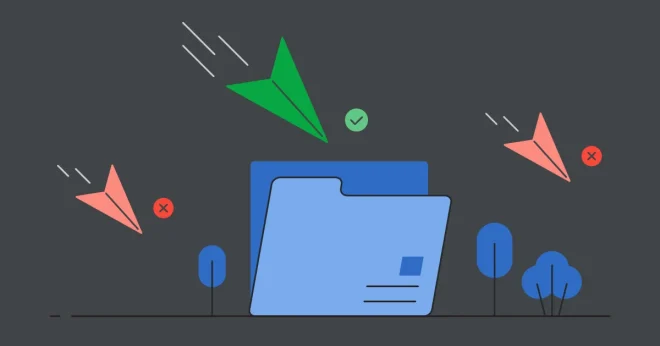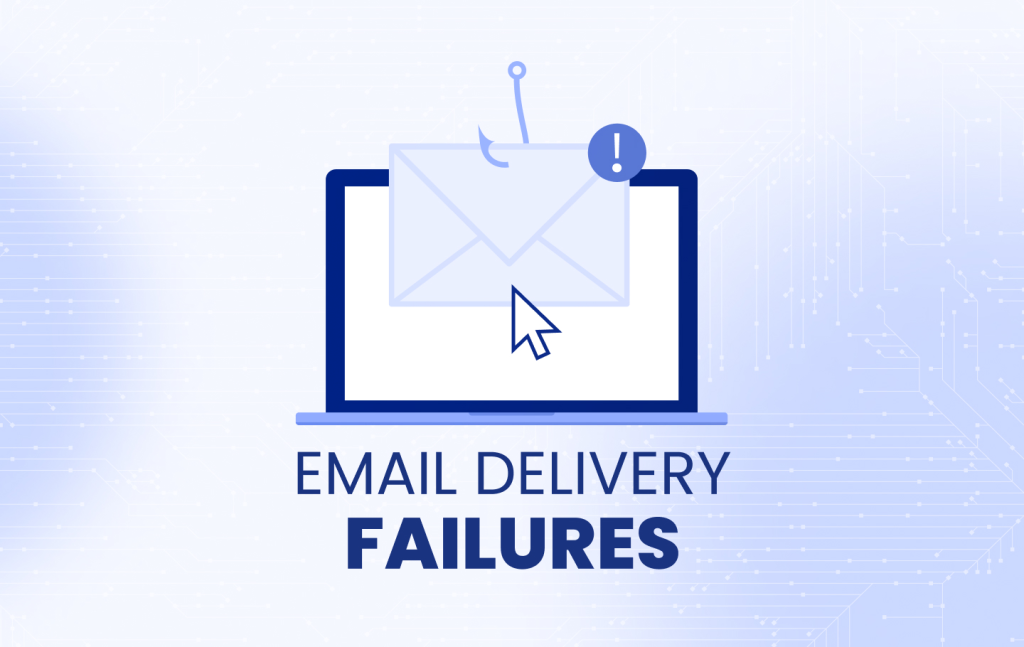
Table of Contents
Introduction:
In today’s digital age, email remains a cornerstone of business communication and marketing. However, even the most well-crafted email campaigns can fall flat if they never reach their intended recipients. Email delivery issues are a common challenge that can disrupt your outreach efforts, harm your sender reputation, and impact your bottom line. Whether it’s spam filters, blacklisting, or server issues, understanding the root cause of these problems is crucial for maintaining effective communication. In this post, we’ll explore common email delivery issues and provide actionable solutions to ensure your emails consistently land in your recipients’ inboxes.
What are email delivery issues?
Email delivery issues refer to problems that prevent an email from reaching its intended recipient’s inbox. These issues can arise from a variety of factors, and understanding them is essential for ensuring reliable email communication.
Here are some common types of email delivery issues:

1. Spam Filters:
- Description: Emails may be marked as spam and diverted to the recipient’s spam or junk folder instead of the inbox.
- Causes: Use of certain keywords, large attachments, sending from an IP address with a poor reputation, or not following best practices for email content and structure.
2. Blacklisting:
- Description: If the sender’s email server or IP address is on a blacklist, emails may be blocked entirely.
- Causes: Sending large volumes of emails that are flagged as spam, using a compromised email account, or having an IP address associated with spam activities.
3. Incorrect Email Addresses:
- Description: Emails sent to incorrect or non-existent email addresses will bounce back to the sender.
- Causes: Typographical errors, outdated contact lists, or incorrect domain names.
4. Blocked Domains or IP Addresses:
- Description: Some recipients may have security settings that block certain domains or IP addresses from sending emails.
- Causes: Domain or IP reputation issues, or recipient-specific security policies.
5. Email Server Issues:
- Description: Technical problems with the sender’s or recipient’s email server can prevent emails from being delivered.
- Causes: Server downtime, misconfigured server settings, or issues with the email service provider.
6. Greylisting:
- Description: Some email servers temporarily reject emails from unknown senders, asking the sending server to retry later.
- Causes: This technique is used to filter out spam by ensuring that the sender’s server is legitimate and will attempt to resend the email.
7. Content Filtering:
- Description: Emails may be blocked or filtered based on their content, especially if they contain certain keywords, attachments, or links.
- Causes: Strict content filtering policies on the recipient’s side or inclusion of suspicious elements in the email.
8. Rate Limiting:
- Description: Sending too many emails in a short period may trigger rate limiting, causing some emails to be delayed or blocked.
- Causes: Bulk sending, especially without proper segmentation or throttling.
9. DNS Issues:
- Description: Problems with the Domain Name System (DNS) settings, such as incorrect MX records, can prevent emails from being properly routed.
- Causes: Misconfigured DNS settings, expired domain registrations, or issues with the DNS service provider.
10. Authentication Failures:
- Description: Emails may be rejected if they fail authentication checks like SPF, DKIM, or DMARC.
- Causes: Improperly configured authentication protocols, or sending from unauthorized servers.
11. Recipient Mailbox Full:
- Description: If the recipient’s mailbox is full, the email may be bounced back to the sender.
- Causes: The recipient hasn’t cleared their inbox or they have a low storage limit.
12. Temporary Issues:
- Description: Temporary network issues or outages can cause delays or failures in email delivery.
- Causes: Internet outages, server maintenance, or high traffic volumes.
Why They Matter:
- Email delivery issues can affect business communications, marketing efforts, and personal correspondence. Ensuring that emails are delivered correctly involves following best practices, monitoring delivery reports, and addressing any issues promptly.
How to fix email delivery issues
Fixing email delivery issues involves identifying the specific problem and then taking targeted actions to resolve it. Here’s a general guide to troubleshooting and resolving common email delivery issues:

1. Check for Spam Filter Issues:
- Review your email content to avoid spammy language, excessive links, or large attachments.
- Use tools to test your email against spam filters before sending.
- Ensure your email has a clear and accurate subject line, and avoid using all caps or excessive punctuation.
- Encourage recipients to whitelist your email address or domain.
2. Resolve Blacklisting:
- Check if your domain or IP address is blacklisted using blacklist monitoring tools.
- If listed, follow the removal process provided by the blacklist authority.
- Ensure your sending practices adhere to email regulations, and avoid sending unsolicited emails.
3. Correct Email Addresses:
- Double-check email addresses for typos before sending.
- Regularly update your contact lists to remove outdated or incorrect addresses.
- Implement a double opt-in process to ensure email addresses are correct at signup.
4. Avoid Domain or IP Blocking:
- Monitor your domain and IP reputation using tools like Google Postmaster Tools or Sender Score.
- Warm up new IP addresses by gradually increasing the volume of emails sent.
- Reach out to the recipient’s IT team if you suspect your domain or IP is blocked and request whitelisting.
5. Address Email Server Issues:
- Check your email server settings to ensure they are correctly configured.
- Monitor server performance and address any issues promptly.
- Consider using a reliable email service provider (ESP) to manage your email delivery.
6. Bypass Greylisting:
- Configure your email server to retry sending emails if they are initially rejected due to greylisting.
- Build a good sending reputation over time, as greylisting often applies to new or unknown senders.
7. Review Content Filtering Policies:
- Avoid using suspicious keywords, and ensure your email content is relevant and personalized.
- Use a consistent and professional email format.
- Avoid attaching large files; instead, provide download links.
8. Manage Rate Limiting:
- Segment your email lists and stagger sending times to avoid sending too many emails at once.
- Use throttling techniques to control the rate of email sending.
- If necessary, consult with your ESP to increase your sending limits.
9. Fix DNS Issues:
- Verify that your DNS settings, especially MX records, are correctly configured.
- Regularly check your DNS records for accuracy.
- Consult with your domain registrar or hosting provider if you experience issues.
10. Ensure Proper Email Authentication:
- Implement SPF (Sender Policy Framework) to specify which servers can send emails on behalf of your domain.
- Set up DKIM (DomainKeys Identified Mail) to add a digital signature to your emails, ensuring they haven’t been tampered with.
- Use DMARC (Domain-based Message Authentication, Reporting & Conformance) to protect your domain from email spoofing.
- Regularly monitor your authentication results and adjust settings as needed.
11. Address Full Mailboxes:
- Inform recipients if their mailbox is full so they can clear space.
- Implement bounce handling to automatically process and remove addresses associated with full mailboxes.
12. Handle Temporary Issues:
- Retry sending the email after some time if the issue is due to temporary server or network problems.
- Monitor the situation to see if the problem resolves itself, or investigate further if it persists.
General Best Practices:
- Monitor Email Metrics: Regularly review your email delivery reports for bounces, spam complaints, and open rates.
- Maintain a Clean Email List: Regularly update and clean your email lists to remove inactive or invalid addresses.
- Test Emails Before Sending: Use email testing tools to check for potential issues with spam filters, formatting, and deliverability before sending your campaigns.
- Stay Compliant with Regulations: Follow email marketing regulations like CAN-SPAM (US) and GDPR (EU) to maintain good standing with ISPs and email providers.
Implementing these practices will help you minimize email delivery issues and ensure that your emails reach their intended recipients.
Conclusion:
Email delivery issues can be frustrating, but they are not insurmountable. By implementing the strategies discussed in this post, you can significantly improve your email deliverability and ensure that your messages reach their intended audience. Regular monitoring, adherence to best practices, and proactive troubleshooting are key to maintaining a strong sender reputation and maximizing the impact of your email campaigns. With the right approach, you can overcome these challenges and achieve more successful and reliable email communication.
